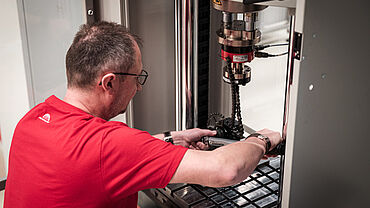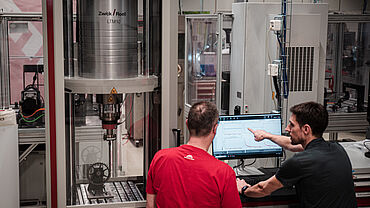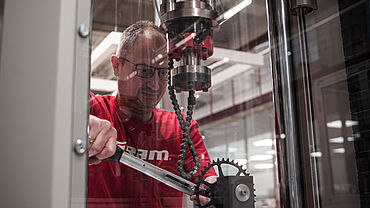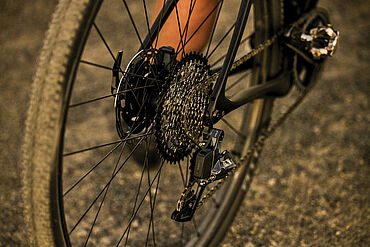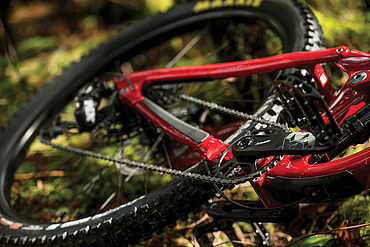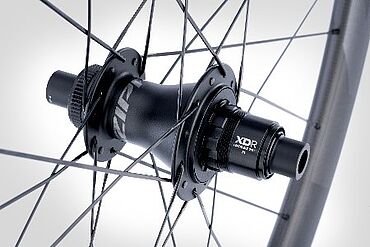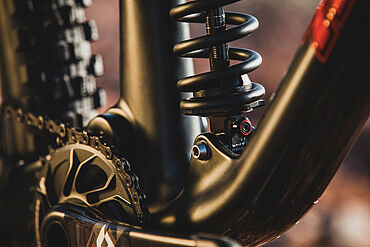Testing of Gears and Hubs: SRAM Deutschland GmbH Trusts in ZwickRoell
SRAM develops and produces innovative and high-quality bicycle products including gears and hubs for both professional athletes and recreational cyclists. To test the quality of bicycle components for longterm use and optimize them, SRAM performs both static and dynamic testing. For these tests, the bicycle component manufacturer has been using ZwickRoell testing machines for more than 15 years.
SRAM, a US-based company with headquarters in Chicago, Illinois, was founded in 1987 and specializes in the development and production of various bicycle components. At their development site in Schweinfurt, Germany, SRAM Deutschland GmbH develops bicycle gears and hubs for cycling enthusiasts around the world.
Schweinfurt is the central location for development, prototyping, and the measurement and testing laboratories—”all under one roof,” explains Martin Kehrer, Senior Test Engineer at SRAM. As a result, the company is in a position—in a few steps and with faster processes—to “develop innovative products quickly and efficiently and continue exciting cyclists all over the world.” To a certain extent, ZwickRoell testing machines also play a role in our efforts. The reason: by using different static and dynamic machines, SRAM Deutschland GmbH has become significantly more efficient in the development of innovative and robust products with added value for their customers.
SRAM: dynamic and static testing with ZwickRoell
The testing lab in Schweinfurt performs both dynamic and static tests on all types of bicycle components for which the machines must offer a high level of flexibility. Currently, SRAM’s test equipment includes three ZwickRoell machines:
- A cLine Z010,
- Aservohydraulic machine HC 25, used for static and dynamic testing
- An electrodynamic testing machine LTM 10—their newest addition.
Dynamic testing at SRAM is mainly carried out at a component level to test these in terms of their operational suitability and durability. Based on the test results, components are then optimized in order to make them more robust and to adapt them even better to corresponding customer requirements.
Laboratory efficiency: up to 80 percent faster
Use of the machines not only leads to quality improvements in the lab at SRAM: ZwickRoell machines also ensure greater performance in terms of process optimization. In the past, some tests were moved from (in some cases aging) specialized testing machines to ZwickRoell testing machines, leading to increased efficiency and “reducing test times by up to 80 percent”. Kehrer: “All this took place with simultaneous optimization of the testing accuracy and improved crack detection on the specimens.”
ZwickRoell testing machines are also used for tests to validate finite element method (FEM) models. This method, common in materials testing, simulates and analyzes the mechanical behavior of materials under load. In addition, FEM is used to determine material fatigue or damage, taking both static and dynamic loads into consideration.
The use of FEM improves the efficiency and cost-effectiveness of the materials test, since it eliminates complex and costly experiments. Kehrer: “The ability to interchange fixtures between the different machines provides us with more testing flexibility in the lab.At the same time, this leads to significantly better machine utilization.”
Testing with ZwickRoell for over 15 years
SRAM Deutschland GmbH has been working with machines from Ulm-Einsingen for more than 15 years, and has been a satisfied ZwickRoell customer ever since. Kehrer explains, „The static machine Z010 was our first ZwickRoell machine.And since then we have, of course, added more machinesThe reliability and precision during our product qualification process, as well as the level of customer service convinced us from the start..”
SRAM manufactures the fixtures and sensors for all component tests in the company’s prototype shop. And since they acquired the LTM10 in 2022, all machines were converted to ZwickRoell’s testXpert III testing software, which has supported users in the laboratory and made work easier by providing a wide range of standards and pre-configuring appropriate parameters according to customer-specific applications. “Through testing, we are constantly learning and improving our products and adapting to new requirements,which ultimately also benefits our cycling-enthusiastic customers,” states Kehrer.
